































£1,064.99*
- Resolution 5120 x 1440
- Diagonal 49"
- Panel type OLED
- Refresh Rate 240Hz
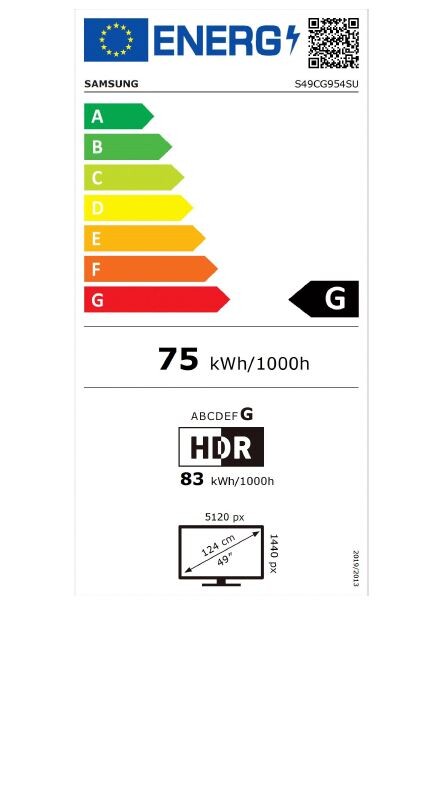


Product information
Odyssey OLED G9 G95SC 2023
- QD-OLED Panel
- Response Time 0.03 ms (G/G)
- Refresh Rate 240 Hz
- Height Adjustable Stand
- LED Lighting with CoreSync Technology
- Samsung Smart Hub incl. Gaming Hub
- FreeSync Premium Pro
- VESA DisplayHDR(TM) True Black 400
- Integrated speakers
An unbeatable combination
OLED & Neo Quantum Prozessor Pro
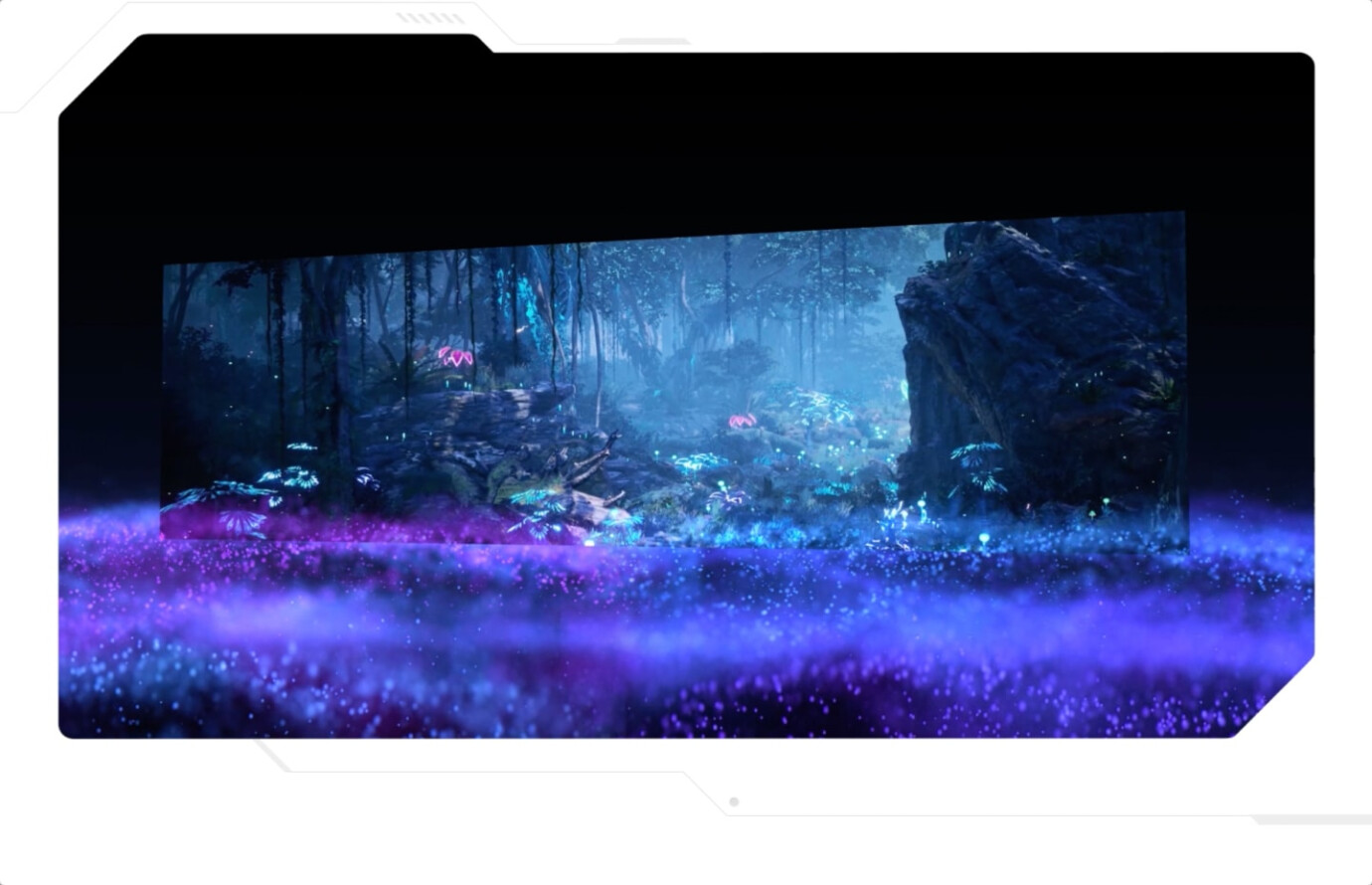
With the advanced Neo Quantum Processor Pro, the image on the OLED panel is analysed and adjusted for maximum quality. Colours, shades and contrast are unified to deliver bright and brilliant images.
Bring your senses to life
49" Dual QHD
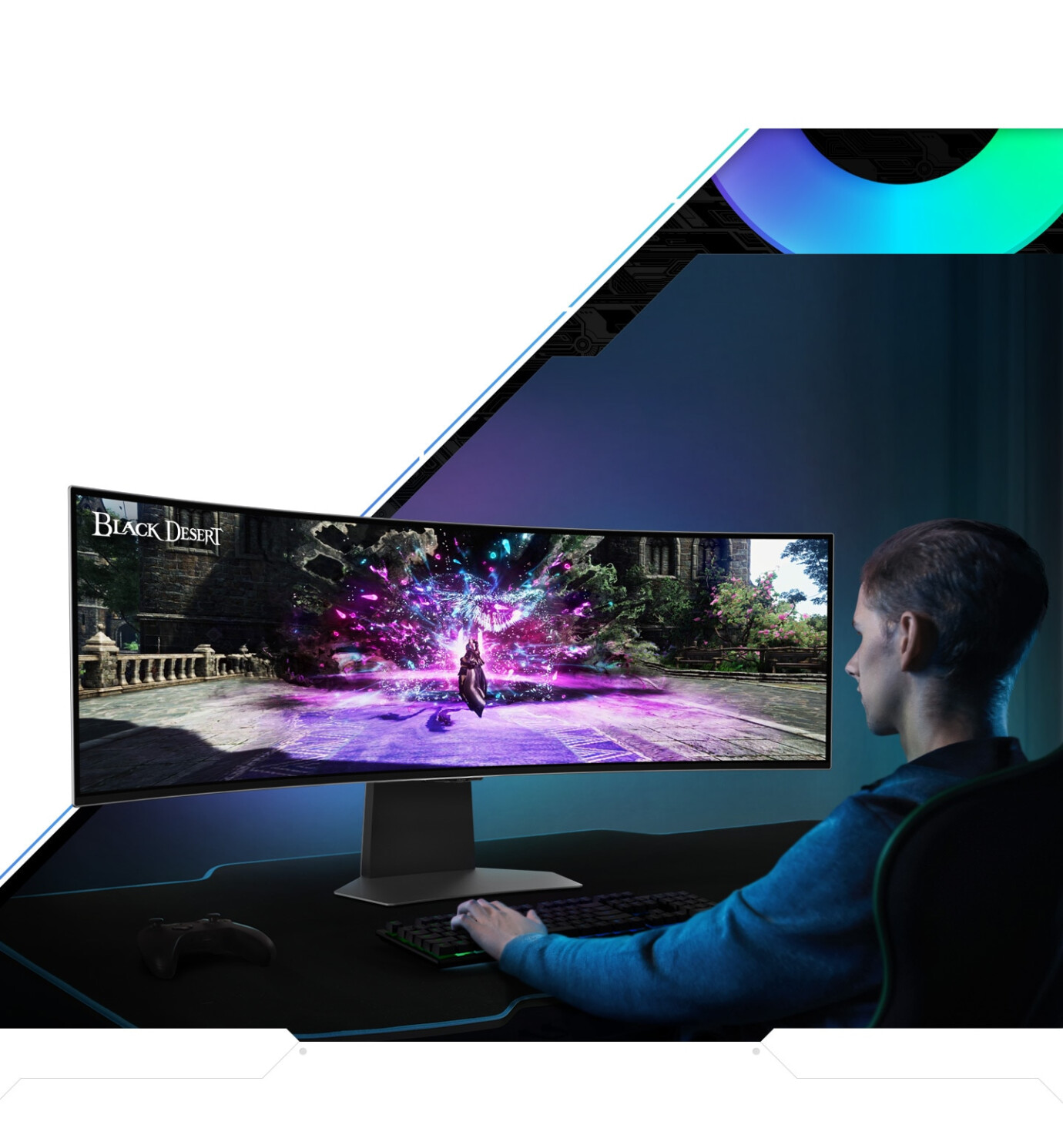
The 49-inch Super Ultra Wide 1800R Curved Display fills your peripheral field of view and immerses you directly in the gaming world. Thanks to Dual QHD, you can keep all the details in sharp focus at all times - even when watching series and playing games at the same time.
Deepest blacks
DisplayHDR True Black 400
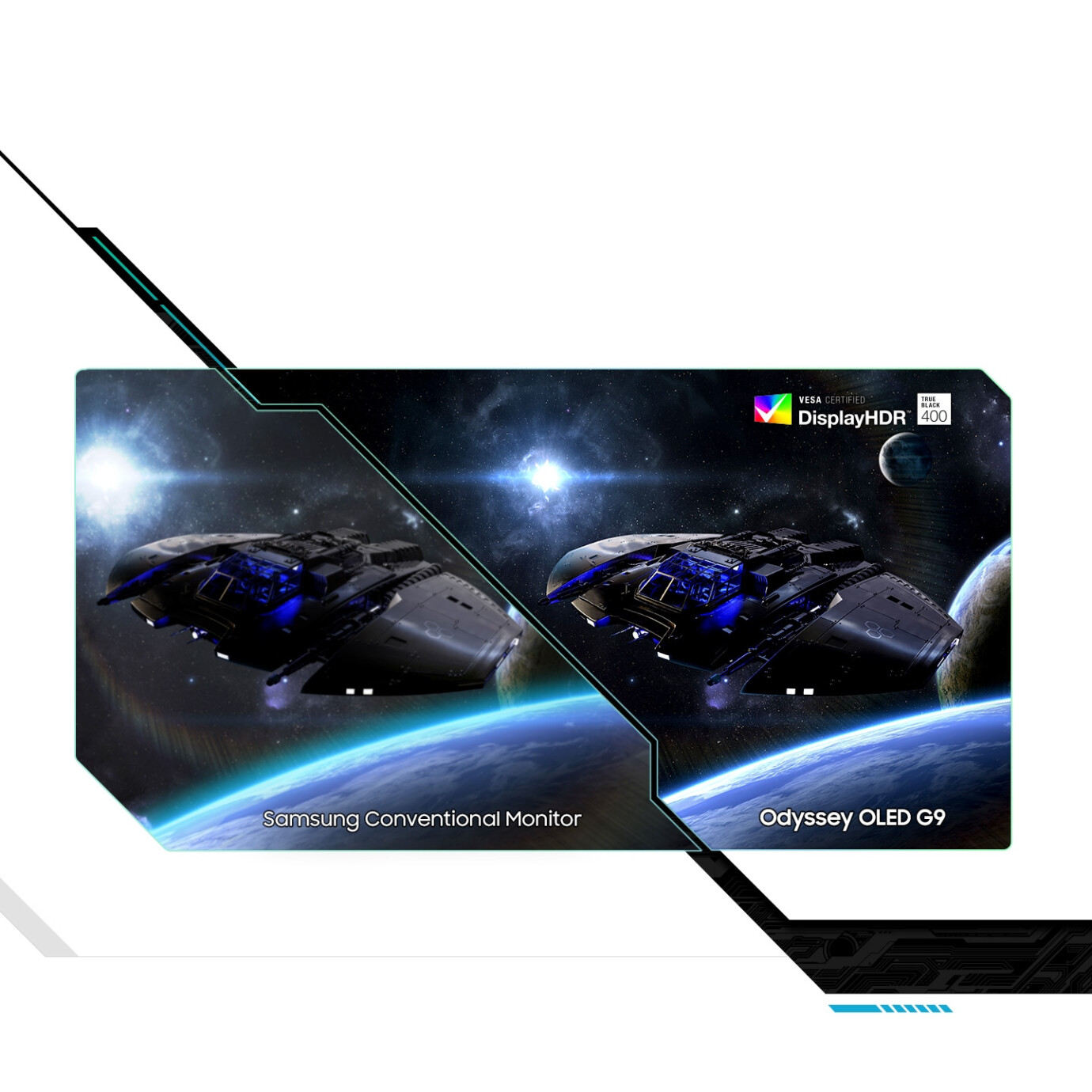
Uncover secrets hidden in the dark depths: Look forward to deepest blacks and darkest colours on screen for intense colour and depth in every game - all without pixel light bleed.
Fast on target
0,03 ms Reaktionszeit & 240 Hz Bildwiederholungsrate
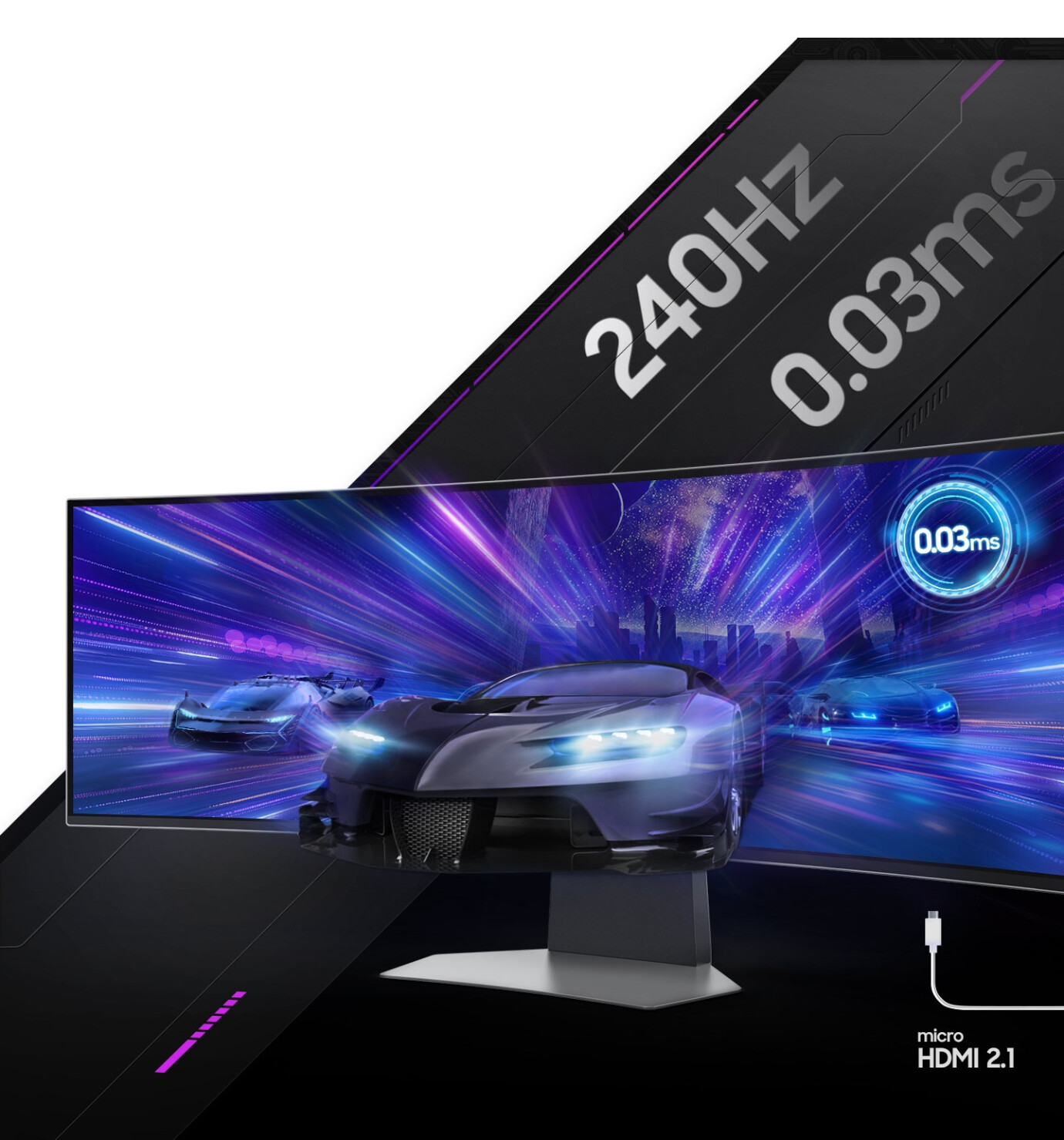
Every millisecond counts when you're playing against the best: OLED technology gives you stunning gameplay with a response time of 0.03 ms and a refresh rate of 240 Hz. Combined with Micro HDMI 2.1 and DisplayPort connections, you can dodge, counter and attack faster.
Fluid action without distractions
AMD FreeSync Premium Pro

AMD FreeSync Premium Pro ensures that fast action as well as complex game scenes can be projected stably and smoothly so you can react quickly.
Your gaming hub
Gaming Hub

The Gaming Hub gives you instant access to top streaming services and your favourite consoles and PCs. Great visuals and responsive gameplay powered by Samsung's advanced game streaming technology - with no download or storage limit.
With quick and easy setup to victory
Game Bar
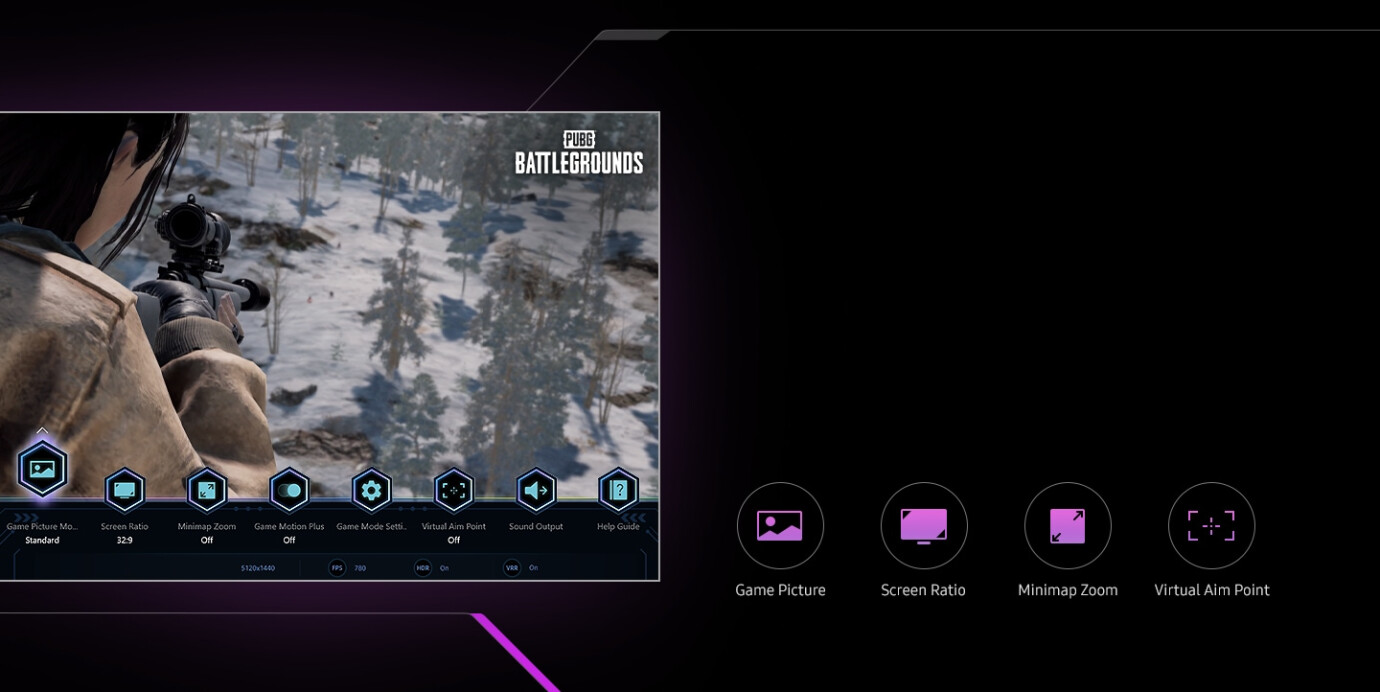
Your gaming experience will also benefit from the Game Bar and its versatile settings. Now you can easily view the status of important settings like FPS and HDR. Adjust the response time, zoom into the minimap or change the aspect ratio and picture mode without interrupting your gameplay.
Your favourite shows in one place
Smart TV-Erlebnis

If you want to take a break from the gaming marathon, you can also access the latest streaming content on Samsung TV Plus. All you need is a Wi-Fi connection. Samsung TV Plus gives you free live content with no downloads or logins, and Universal Guide can suggest personalised content.
A lot of desk space
Integrated speakers
Keep your desk clutter-free with built-in speakers. Take your gaming experience to the next level without having to plug in new devices.
Your smart command centre
IoT hub & voice assistance services
Set the stage for your victory from the monitor: Dim the lights, adjust the thermostat and lower the blinds - all with the help of the SmartThings app. You can also initiate these commands via voice assistance using Bixby or Alexa
Technical data
| Name | Samsung Odyssey G9 G95SC 49" OLED Monitor, 5120 x 1440, 240Hz, 1ms |
|---|---|
| Article number | 1000028581 |
| GTIN/EAN | 8806094972566 |
| Manufacturer SKU | LS49CG954SUXEN |
| EPREL ID | 1538267 |
| Model name | Odyssey G9 G95SC |
| Brand | Samsung |
| Product Type | Monitor |
| Product Series | Samsung Odyssey Series |
| Technology | LCD |
| Panel type | OLED |
| Resolution | 5120 x 1440 |
| Diagonal | 49" |
| Aspect Ratio | 32:9 |
| Viewing angle - Horizontal | 178° |
| Viewing angle - Vertical | 178° |
| Contrast Ratio | 1,000,000 :1 |
| Max. Brightness | 250 cd/m² |
| Response time | 1ms |
| Refresh Rate | 240Hz |
| Support - VESA | 100 x 100 |
| Inputs | 1x Displayport , 1x HDMI , 3x USB-A |
| Features | Flicker Free , HDR |
| Product width | 119.47 cm |
| Product height | 36.5 cm |
| Product depth | 18.08 cm |
| Weight | 9.2 kg |
| Colour | White |
| EEK Spectrum | A to G |
| Energy efficency class | G |
| Delivery contents | DisplayPort Cable , HDMI Cable , Power cable |
| Condition | New |
| Warranty | 24 Month |
| Warranty type | Bringin service Service and support information |
Downloads
Product safety
| Person responsible for the EU |
|---|
| Samsung Electronics GmbH |
| Am Kronberger Hang 6 |
| 65824 Schwalbach |
| Germany |
| sseg.comm@samsung.com |



